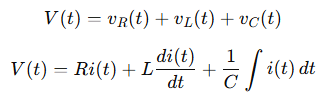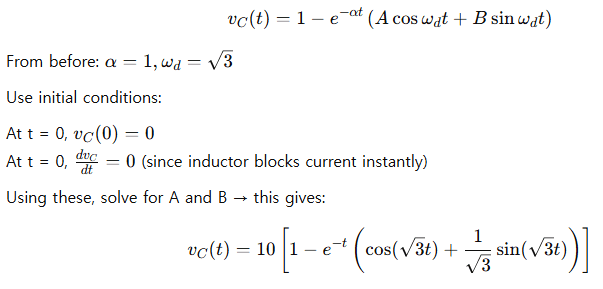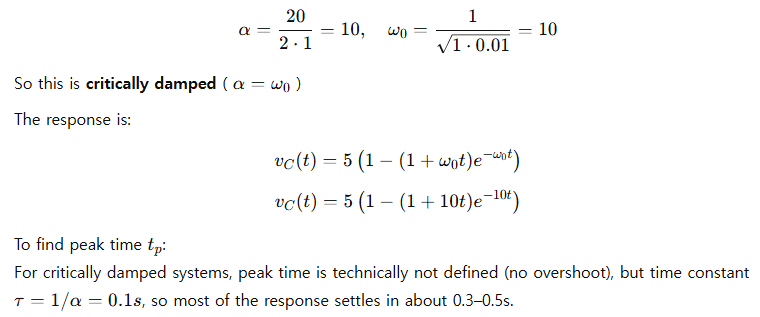Introduction
When you power up a circuit with resistors (R), inductors (L), and capacitors (C), things don’t just jump to steady-state instantly. Instead, they go through a transient response. This is especially interesting — and important — in second-order circuits, where the interaction of L and C creates oscillations, damping, or sometimes even both.
Let’s take a deep dive into how second-order RLC circuits behave during transient states, how we mathematically describe that behavior, and how you can analyze these circuits with confidence.
1. What is a Second-Order RLC Circuit?
A second-order circuit includes:
- One resistor (R)
- One inductor (L)
- One capacitor (C)
These components can be arranged in series or parallel, and both arrangements exhibit second-order differential equation behavior.
Let’s consider a series RLC circuit for simplicity, powered by a DC voltage source.
2. Deriving the Characteristic Equation
Applying Kirchhoff’s Voltage Law (KVL):

Differentiate both sides to eliminate the integral:

Now rearrange:

Divide everything by L:

3. General Form of the Characteristic Equation
This is a second-order homogeneous differential equation:

Where:

Three Cases Depending on Damping:

4. Step-by-Step Examples
Let’s practice with three example problems from beginner to advanced level.
🟢 Beginner Example: Natural Response of a Series RLC Circuit
Problem:
A series RLC circuit has R = 2Ω, L = 1H, and C = 0.25F. Find the form of the current response i(t) assuming zero input (natural response only).
Solution:

🟡 Intermediate Example: Step Response with Initial Conditions
Problem:

Solution:
The step response of an RLC circuit follows a similar form:

This is an oscillatory approach to 10V — classic underdamped behavior.
🔴 Advanced Example: Overdamped Case and Peak Time
Problem:

Solution:
Compute parameters:

5. Practical Insights and Application
Why do we care about this?
- Circuit stability: Under- or overdamping affects stability.
- Signal response: Audio, filters, and communication circuits rely heavily on this.
- Control Systems: Similar math applies to mechanical and thermal systems.
Whenever you power up an amplifier, switch on a relay, or pulse a circuit — you’re seeing transient response in action.
6. Summary
To recap:
- Second-order circuits follow a differential equation involving R, L, and C.
- The transient response depends on damping (α) and natural frequency (ω0).
- You can analyze the system as overdamped, critically damped, or underdamped.
- Examples show how these theoretical ideas play out in real scenarios.
Once you grasp this, analyzing real-world circuits becomes much easier — and much more interesting.

Leave a Reply